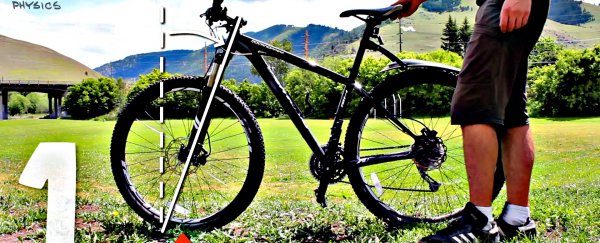If you're a bike lover, you've probably noticed that a bicycle travelling fast enough has the spooky ability to be able to stay upright without a rider. Even when you push it off-track, it somehow manages to right itself. So how does this work? As Henry explains in the latest episode of MinutePhysics, this 'ghost bike' phenomenon is actually a whole lot more complex than people think.
Generally, the assumption is that the conservation of angular momentum keeps a bike upright. But just lock the handlebars and see how quickly a ghost bike falls over. Another misconception is that forward momentum stops the bike from falling, but if this was the case, the bike would tip as soon as you knocked it off course.
Instead, when a ghost bike is pushed in a new direction, its wheels steer themselves back under the centre of mass, as Henry demonstrates in the video.
So why does this happen? This balancing act is the result of three mechanisms. Firstly, the front wheel of a normal bicycle touches the ground behind its steering axis, which is tilted backwards slightly. That means that when the bike leans to the left, the upwards force from the ground turns the wheel and handlebars to the left, helping to steer its wheels back under its centre of mass.
Next, the centre of mass of the front wheel and handlebars is distributed in front of the steering axis, so when the bike leans to the left, the downwards pull of this mass helps pull the wheel to the left too. And finally, the gyroscopic effect from the wheels helps steer the bike.
Written out like that, it's a little hard to follow, but watch the video above to see Henry explain it with handy illustrations, and we promise it'll be a lot clearer.
But even though physicists understand these three mechanisms, they still can't work out the exact combination of variables that make a bike stay up. The best they can do is find out which combinations work, and which don't.
Watch the episode to see Henry break down the physics much better than we just did, and also test out bikes with different variables to see if they'll stay upright. The best part is that this is science you can try at home (just make sure you're wearing a helmet).
